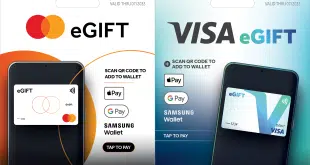10 Tipping Points for the Payments Industry
Part 6
The venerable credit card has been, by most measures, the most successful retail financial-services product in the past half-century. But even die-hard proponents can in good conscience no longer deny the growing evidence that the market for signature-based credit cards has passed the saturation point. Even rapidly proliferating and expensive rewards programs won't propel this aging payment product to sustained success in the new, faster-growing remote transaction venues.
For awhile, the card companies tried to sell society on the notion that signature-based credit cards, which are by definition designed for face-to-face transaction venues, could be morphed to fill electronic payment needs in emerging markets like online purchases and bill payments, and even mobile commerce. Indeed, for awhile, credit cards got the e-commerce market up and going because it was the only way to pay electronically over an open network.
Today, however, credit cards are in retreat online and shunned elsewhere?mostly in favor of debit payment products. Visa itself acknowledges that about 55% of its e-commerce transactions are now done with signature-based debit cards rather than credit cards?more than double the proportion of just two or three years ago!
And despite many card-network promises to card issuers that the next big wave of credit card adoption would be for bill payments, penetration of this market of more than 20 billion payments a year is puny, and not likely to get much bigger.
At a very basic level, the problem with the credit card in these new transaction venues is the product itself. Because the signatures can't be verified electronically, the card associations treat online and other remote transactions as card-not-present, meaning they are inherently more risky and are therefore subject to higher interchange rates. Yet the card companies lay off nearly all of that risk, and the costs for managing it, onto the merchant or biller.
As a result, while the largest and most sophisticated e-retailers might pay about 2% in credit card interchange, their costs for managing the risk (for manual review of transactions, blocking good transactions to catch bad ones, friendly fraud, and charge-backs with impunity) can be as much as twice that percentage!
That's a lot of extra cost for a payment type that by its very acceptance rules and authorization process compels merchants to treat a payment by a customer who's transacted with them hundreds of times the same way as one bearing a 16-digit number with an expiration date coming in from a Latvian IP address.
So, Amazon.com now offers its customers the opportunity to pay via the automated clearing house?an e-check that requires registration of the MICR data and self-insures on the risk. And a growing number of mainstream merchants now offer PayPal as an option online (e.g., Barnes & Noble, Dell, Hotwire, etc.), getting an estimated 20%-to-25% pricing break for mostly guaranteed transactions. Ditto for BillMeLater, which does its own credit assessment on customers and achieves materially bigger purchase sizes. And safer, less expensive PIN-debit purchases are on the way. So who needs credit cards?
Maybe billers? But even in this market, the credit card companies are having a lot less luck. Despite a lot of development expense and even some promotional pricing (especially for utilities), credit card penetration of key bill-payment sectors runs only around 2% to 4%. Extending card rewards to bill payments isn't likely to have a major impact: A recent American Bankers Association/Dove Consulting payments study suggests that credit card penetration might at most double in these venues. And signature-debit cards are viewed by most billers as the most expensive payment type end-to-end, and most of those transactions clear and settle in two to three days?just like far cheaper ACH payments. So that's not a solution.
Meanwhile by 2011, some 3.5 billion payments a year will convert from mostly paper checks to electronic payments in the online channel, and the vast majority of these payments are likely to be done by ACH, where the bank fee is only a few cents, but the biller has to manage returns and risk.
So what's the alternative? PIN-less debit, where the payment is done in real time using the payer's ATM debit card. Because it's a transaction between known parties with an established relationship, PIN-less debit is considered safe enough to not need a PIN?just the 16-digit personal account number (PAN). PIN-less debit transactions cost the biller between 35 cents and 50 cents each?for the most part all new financial-institution revenue?but produce much cleaner payment streams in return.
And that's a classic win-win for the payments industry.
Prognosis: Alternative payments are likely to constitute one out of every four online purchases in five years' time, with credit cards playing a diminishing and increasingly peripheral role. And despite repeated roadblocks erected by Visa to forestall PIN-less debit penetration of online bill payments, this highly-sought-after payment option will rapidly move beyond today's six “permitted” sectors into a growing array of new electronic payment applications, such as debt collections, apartment-rental payments, and even credit card bills! Wildcard: Evidence continues to mount that more payment options online constitute a rising tide that floats all boats; look for mobile commerce to avoid credit card myopia by fostering e-wallets!
–Steve Mott





